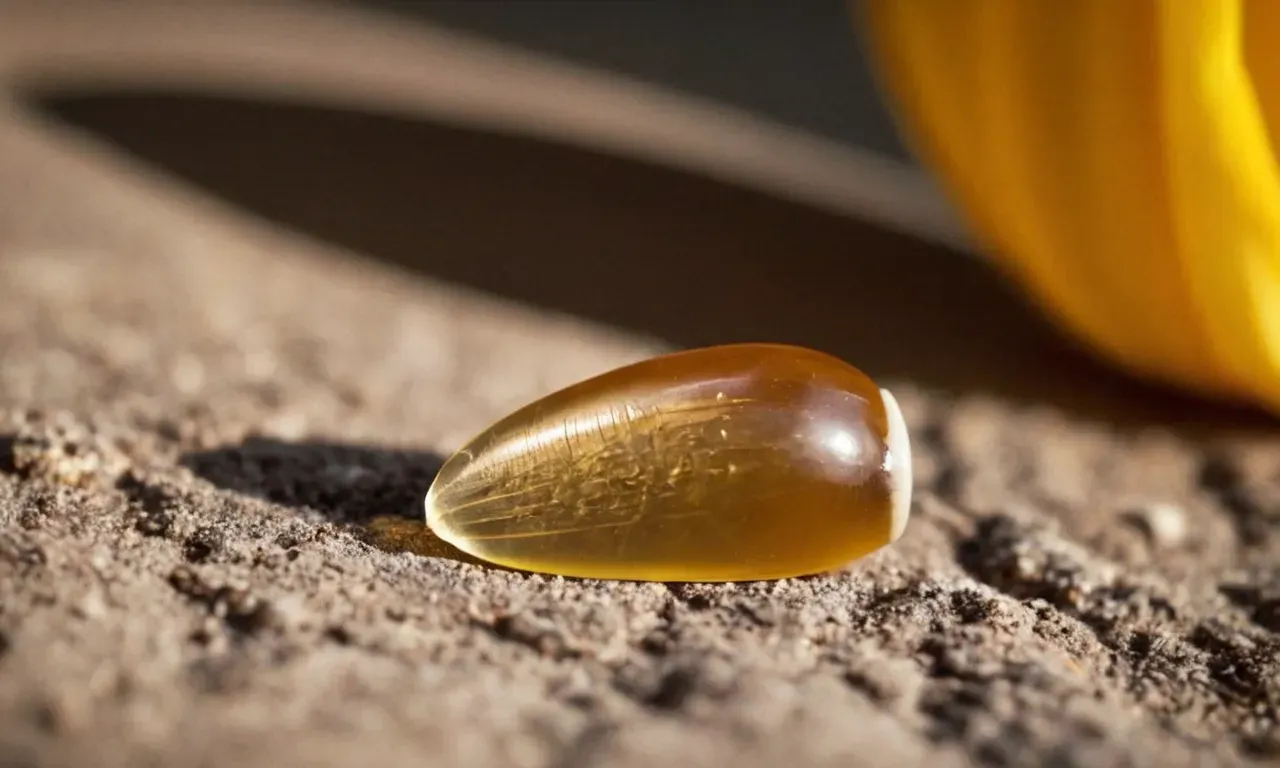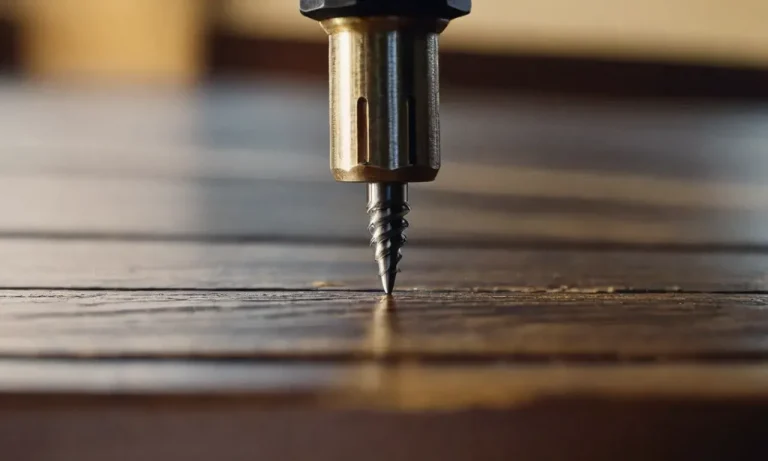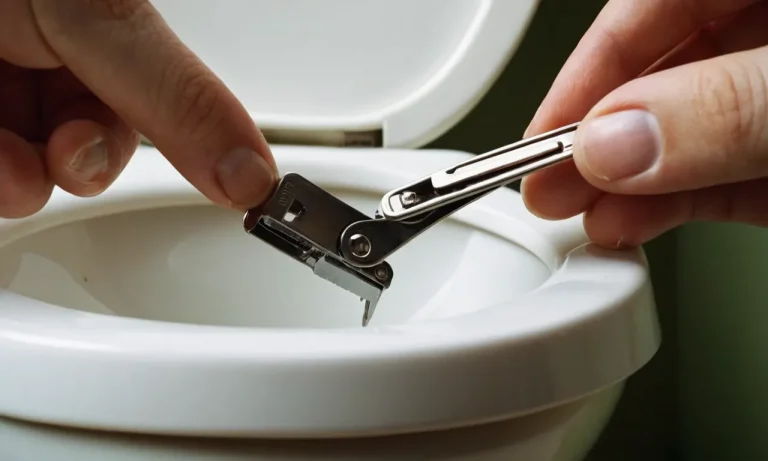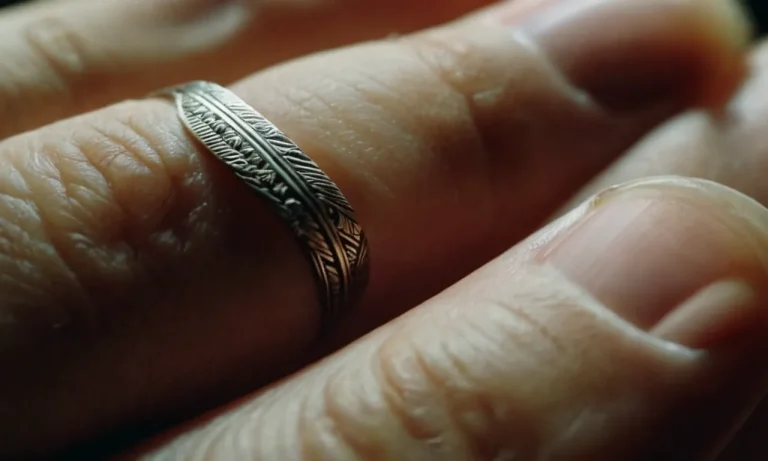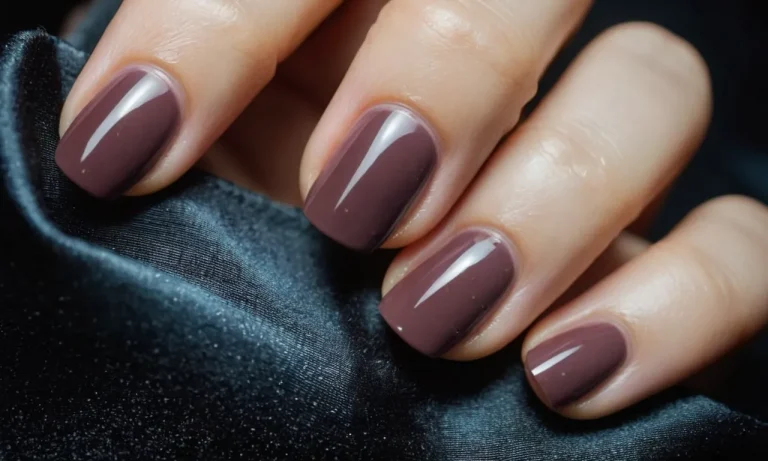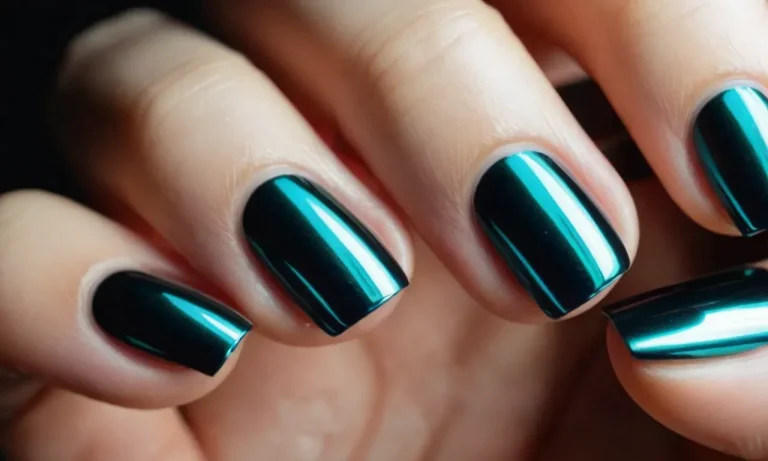Why Is My Big Toe Nail Yellow? A Complete Guide
If you’ve noticed your big toenail starting to turn yellow, you’re not alone. A yellow toenail can be alarming, but don’t worry – in most cases it’s harmless and easy to treat.
If you’re short on time, here’s a quick answer to your question: Your big toenail may turn yellow due to a fungal infection, injury, or natural aging. Keeping your feet clean and dry can help prevent fungal toenail infections.
Using antifungal creams or getting the nail trimmed by a podiatrist can also treat a yellow toenail.
In this comprehensive guide, we’ll cover all the potential causes of a yellow big toenail, when you need to see a doctor, prevention tips, and how to get rid of a yellow toenail using home remedies or medical treatments.
What Causes a Yellow Big Toenail?
Fungal Infection
A fungal infection, also known as onychomycosis, is one of the most common causes of a yellow big toenail. Fungi can infect the nail bed and cause the nail to thicken, become brittle, and turn yellow. This happens when fungi feed on keratin, the protein that makes up the nail plate.
Onychomycosis is contagious and risk factors include sweating a lot, walking barefoot in damp public places, having a minor skin or nail injury, or having a weak immune system. Treatment usually requires taking oral antifungal medication for up to 12 weeks.
Injury
An injury, such as stubbing your toe or dropping something on it, can cause a subungual hematoma – bleeding under the nail. As blood pools under the nail, it can appear yellow, black, or brown. The discoloration grows out with the nail over several months.
Treating an injury by icing and elevating the toe can help prevent or minimize a hematoma.
Aging
As we age, nails naturally thicken and develop ridges. Nails also grow more slowly, giving them more time to collect fungal infections and trauma that causes discoloration. Older adults are more likely to have medical conditions that affect nail color, like diabetes, poor circulation, and nail disorders.
Keeping nails trimmed and scrubbing under them while washing helps prevent discoloration.
Nail Disorders
Certain nail disorders can turn the nails yellow. One example is yellow nail syndrome, a rare condition characterized by thickened, slow-growing, yellow nails. It’s usually accompanied by lymphedema (chronic swelling) and respiratory problems.
Yellow nails can also occur with psoriasis, lichen planus, and alopecia areata. These disorders interfere with normal nail growth.
Poor Circulation
Poor circulation reduces blood flow to the extremities, including the toes. This can make the nail beds pale or yellowish in color. Circulation issues are common with peripheral artery disease (PAD), varicose veins, diabetes, and thyroid disorders.
Quitting smoking, exercising regularly, and managing underlying health conditions can improve circulation.
Diabetes
A yellow, thickened big toenail may be a sign of diabetes. High blood sugar levels associated with diabetes affect nerve functions and circulation, especially in the feet and toes. This impairs nail growth and can lead to fungal and yeast infections causing discoloration.
Managing diabetes with medication, diet, and exercise helps improve toenail appearance and prevent complications.
When to See a Doctor About a Yellow Toenail
Severe Pain in the Toe
If you are experiencing severe or persistent pain in your toe along with a yellow toenail, it’s important to see a podiatrist. This level of discomfort is not normal and may indicate an underlying infection or other issue that needs medical treatment.
Leaving it unchecked can allow things to get worse. Don’t wait around in serious pain hoping it will just go away on its own.
Redness or Pus Around the Nail
Observe your toenail closely for signs of redness, inflammation, or pus around the edges. This can signify a bacterial or fungal nail infection that requires prescription medication to clear up. Over-the-counter treatments are not strong enough in these situations.
Trying to treat it at home may make the problem more stubborn and harder to eradicate.
Spreading Discoloration
Keep an eye on the borders of the yellowed area – is it expanding into more of the nail over time? Progressive discoloration like this could mean the nail bed is attacked by an infection and it will likely continue getting worse without medical care.
Don’t delay making an appointment if you witness the edges of the yellow region visibly moving across more surface area.
Nail Separation from Bed
In some cases, an infected toenail will start to separate from the nail bed underneath as it deteriorates from the inside-out. There may be debris accumulating underneath as the nail lifts up. This detachment signifies advanced progression of an underlying problem.
Seek podiatry evaluation immediately if any portion of your nail begins elevating away from the skin underneath.
You Have Diabetes
People living with diabetes face higher risk of developing stubborn fungal or bacterial toe infections. Their compromised circulation reduces the body’s ability to heal. If you have been diagnosed with diabetes and notice a yellow tinge in your toenail along with any discomfort or other symptoms, prompt medical care is extremely important.
An infection left untreated in a diabetic can spiral out of control quickly with severe consequences.
How to Prevent Yellow Toenails
Practice Good Foot Hygiene
Keeping your feet clean is crucial for preventing fungal infections that can lead to yellow nails. Wash your feet daily with antibacterial soap and dry thoroughly, especially between the toes. Trim toenails straight across to avoid ingrown toenails that can trap fungus.
Consider using an antifungal spray or powder on your feet and in your shoes to help prevent infections.
Wear Clean, Dry Socks
Wear clean, dry socks that wick moisture away from your feet. Change socks at least once a day, or more often if your feet sweat a lot. Wear socks made of breathable materials like cotton or wool. After exercising or getting your feet wet, dry your feet and put on clean, dry socks to prevent fungal growth.
Don’t Walk Barefoot in Public
Avoid walking barefoot in public showers, pools, gyms, or locker rooms, where you can pick up a fungal infection. Bring sandals or shower shoes to wear instead. This prevents exposing your bare feet to bacteria and fungi that cause nail infections and discoloration.
Trim Nails Properly
Trim your toenails regularly, cutting them straight across to avoid ingrown nails. Don’t cut nails too short or round off the edges, which increases risk of ingrown nails. Use clean nail clippers and files.
Disinfect tools after each use with rubbing alcohol to prevent spreading infections from nail to nail.
Treat Athlete’s Foot Quickly
Athlete’s foot is a common fungal infection that can spread to toenails, causing yellowing. Treat minor athlete’s foot with over-the-counter antifungal creams. For more stubborn infections, see your doctor for prescription oral antifungals.
Leaving athlete’s foot untreated increases the likelihood it will infect the nail beds.
Wear Proper Footwear
Wear shoes that fit well and allow your feet to breathe. Avoid wearing tight shoes that compress your toes, which can lead to ingrown nails and make your nails more prone to fungal infections. Change out of sweaty athletic shoes and socks after working out.
Consider buying moisture-wicking athletic socks to keep feet dry.
Home Remedies to Treat a Yellow Nail
Tea Tree Oil
Tea tree oil is a popular natural antifungal that can be applied directly to yellow toenails. Studies show tea tree oil solutions effectively combat stubborn fungal nail infections. To use, dip a cotton swab into undiluted tea tree oil and gently brush onto the yellowed nail and surrounding skin once a day.
Be sure to wash hands after each application to prevent spreading infection. Consistent use for 3-6 months often gradually resolves yellowing caused by fungal buildup underneath the nail.
White Vinegar
The acidic nature of white household vinegar makes it an excellent home remedy for managing yellow toenails. Mix equal parts white vinegar and warm water, soak feet for 15-20 minutes daily. The acidic solution helps destroy the fungus responsible for the yellow discoloration.
For more potent fungus-killing benefits, use undiluted vinegar. However, this may cause skin irritation for some people. Anecdotal reports show 6 weeks of vinegar soaks leads to whiter, healthier-looking nails.
Baking Soda
Baking soda’s antifungal and alkaline properties provide soothing relief for itchy, inflamed yellow nails while neutralizing fungus overgrowth. Create a paste using 3 parts baking soda to 1 part water. Apply paste to entire toenail and let sit for 10 minutes before rinsing. Repeat daily.
Additionally, add 1⁄2 cup baking soda to a foot bath to soak feet for 20 minutes 2-3 times per week. Follow with moisturizer. Be patient – consistent use for 2-3 months provides best results.
Oregano Oil
Oregano oil is gaining popularity as a nail fungus treatment due to its strong antifungal activities. According to a 2020 study, oregano oil solutions effectively inhibit common nail fungus strains. Mix 2-3 drops oregano essential oil with 1 teaspoon carrier oil like olive or jojoba oil.
Use a cotton swab to apply mixture to the yellow nail and surrounding skin twice daily. Consistent application for 3-4 months often gradually resolves yellowing caused by underlying nail fungus.
Vicks VapoRub
The camphor and menthol ingredients of Vicks VapoRub impart topical antifungal relief for discolored yellow nails. Gently rub a small amount of VapoRub into toenails and nail beds at night before bedtime. Cover treated nails with lightweight socks. The ointment penetrates best overnight.
Repeat nightly. While results take patience with consistent use for 8-12 weeks, many people report gradual clearing of yellowed fungal nails. Since too much Vicks can burn or irritate skin, discontinue use if increased redness or stinging occurs.
Medical Treatments for a Yellow Toenail
Antifungal Creams
Topical antifungal creams like clotrimazole, miconazole, and tolnaftate are often the first line of treatment for yellow toenails caused by fungal infections. These over-the-counter medications can be applied directly to the affected nail 1-2 times per day.
The active ingredient works to kill the fungus and prevent further growth. It may take several months of diligent application to fully clear the infection. Some tips for effective use of topical antifungals include filing down thickened nails before application and applying after showering when the nail is softest.
While antifungal creams have low risk of side effects, occasionally people may experience skin irritation. Overall, topical antifungals provide an accessible and low-commitment option to start treating yellow toenails.
Oral Antifungal Medication
For moderate to severe fungal toenail infections, oral antifungal medications may be prescribed by a doctor. Two common options are terbinafine and itraconazole. These medications work systemically to target the root cause of the infection and prevent the fungus from spreading.
Terbinafine is taken daily for 6-12 weeks, while itraconazole dosage is pulse therapy of 1 week on and 3 weeks off, for a total of 12 weeks. Blood testing is often required to monitor liver function with these oral antifungals.
They are quite effective with success rates around 70% for terbinafine and 60-70% for itraconazole. However, the infection may return after stopping treatment. Potential side effects include headache, skin rashes, nausea, diarrhea, or liver damage.
Overall, oral antifungals provide a more aggressive approach for severe yellow toenail fungus.
Laser Therapy
A newer treatment option for fungal toenail infections is laser therapy. This uses concentrated beams of light to penetrate the nail and kill the fungus at its source. The laser light is able to selectively target the fungal cells while leaving surrounding nail tissue undamaged.
Local anesthesia is applied beforehand to numb any pain. Most patients require 2-4 treatments spaced 2-4 weeks apart. Each session takes around 30 minutes. Laser therapy for onychomycosis has high efficacy with 70-80% of patients experiencing significant improvement or full clearance.
There is minimal risk of side effects besides mild pain or swelling after treatment. The main downside is that laser therapy can be quite expensive and is rarely covered by insurance. However, it provides a safe and effective option for stubborn toenail fungus.
Surgical Removal
In severe cases where the nail is extensively damaged, surgical removal of part or all of the toenail may be considered. This is often performed under local anesthesia in a podiatrist’s office. The damaged nail is peeled off or cut out using special surgical instruments.
Chemical cauterization may also be applied to prevent regrowth. After surgery, antibiotic ointment and bandages are used to dress the wound as it heals over 4-6 weeks. Permanent nail removal provides immediate improvement in appearance and symptoms.
However, there is risk of pain, infection, and recurrence of fungal infection. Cosmetic issues are also a concern with loss of the toenail. Therefore, surgical removal is typically reserved for those with chronic nail fungus that is unresponsive to other treatments.
It can provide a “last resort” option when no other therapies have worked.
Conclusion
A yellow toenail is common but should be evaluated, especially if accompanied by any pain or changes in the nail. Keeping your feet clean and dry can prevent fungal infections that cause yellowing.
Using over-the-counter antifungal creams or home remedies may resolve a yellow nail. See your doctor for prescription oral medication or laser treatments if OTC methods don’t work. In severe cases, surgical removal of part or all of the nail may be done.
With proper prevention and treatment, you can clear up a yellow toenail and regain healthy-looking feet.

